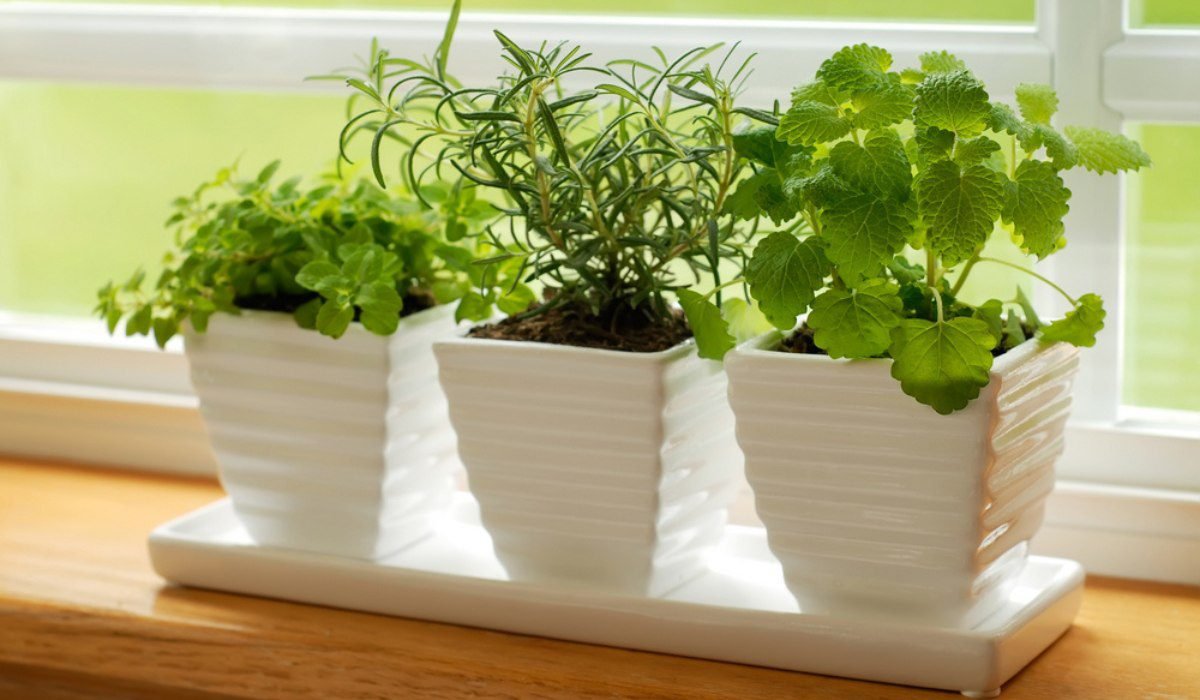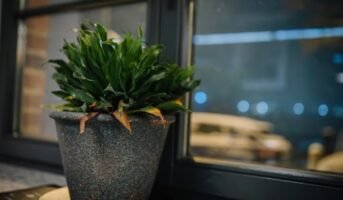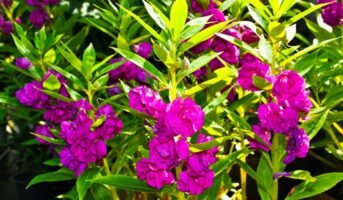In recent times, the inclination towards a holistic and natural approach to health has led many individuals to explore the world of indoor medicinal plants. Beyond their aesthetic appeal, these green companions offer a plethora of health benefits, adding a touch of nature to our homes. Let’s delve into the fascinating realm of indoor medicinal plants, discovering how they not only elevate the aesthetics of our living spaces but also contribute to our overall well-being.
See also: 10 Bonsai plants ideal for your home
Aloe Vera (Aloe barbadensis miller)
Aloe Vera, commonly known as the “Plant of Immortality,” boasts a gel with remarkable soothing properties. This gel, extracted from succulent leaves, is renowned for its ability to treat minor burns, and skin irritations, and promote wound healing. To thrive indoors, Aloe Vera prefers well-draining soil, and indirect sunlight, and requires occasional watering to prevent root rot.

Lavender (Lavandula angustifolia)
Lavender, recognised for its calming properties, extends its benefits beyond its fragrant blooms. The plant reduces stress and anxiety, making it a perfect addition to indoor spaces. To flourish, lavender requires bright sunlight, well-draining soil, and moderate watering. The aromatic flowers can also be utilised in various home remedies and aromatherapy practices.

Mint (Mentha spp.)
Mint, with its refreshing aroma, is not just a culinary delight but also a valuable medicinal herb. The leaves of mint plants aid in digestion, and mint tea is a popular remedy for indigestion and upset stomach. Mint plants thrive in partial sunlight, prefer moist soil, and benefit from regular watering to maintain their vibrancy.

Rosemary (Rosmarinus officinalis)
Rosemary is not only a culinary herb but also possesses potential cognitive benefits. Known to enhance memory and concentration, rosemary adds both flavour and function to indoor spaces. Thriving in full sunlight, rosemary prefers well-draining soil and requires infrequent watering to prevent root issues.

Snake Plant (Sansevieria trifasciata)
The snake plant, appreciated for its air-purifying abilities, is an ideal choice for indoor environments. Filtering common indoor pollutants contributes to cleaner air. Snake plants tolerate low light conditions, require well-draining soil, and should be watered sparingly to prevent overhydration.

Holy Basil or Tulsi (Ocimum sanctum)
Holy basil, revered for its adaptogenic properties, helps the body adapt to stress. This sacred herb is also known for its antibacterial and anti-inflammatory qualities. Growing well in bright sunlight, holy basil prefers well-draining soil and benefits from regular watering to maintain its health.
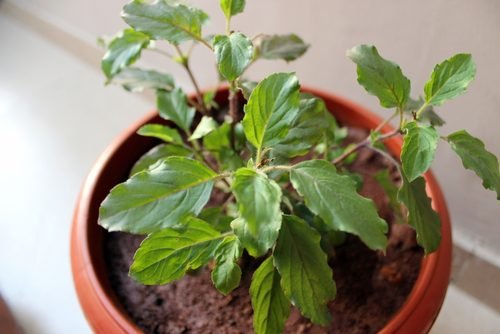
Thyme (Thymus vulgaris)
Beyond its culinary uses, thyme possesses antimicrobial properties and can aid in respiratory health. The invigorating aroma of thyme contributes to a pleasant indoor atmosphere. Thriving in full sunlight, thyme requires well-draining soil and moderate watering to flourish.

Chamomile (Matricaria chamomilla)
Chamomile, celebrated for its calming effects, is often used to make soothing tea. Its delicate flowers can be cultivated indoors to provide a relaxing and aromatic atmosphere. Chamomile plants prefer bright sunlight, well-draining soil, and regular watering to thrive.

Lemon Balm (Melissa officinalis)
With its citrusy fragrance, Lemon balm has a calming effect that makes it valuable for stress reduction. Thriving in partial sunlight, lemon balm prefers well-draining soil and regular watering to maintain its lush foliage and aromatic leaves.
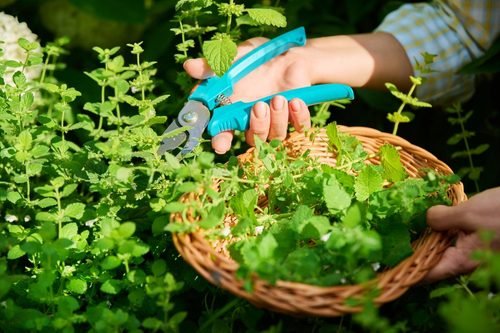
Echinacea (Echinacea purpurea)
Echinacea, recognised for its immune-boosting properties, is often used in herbal remedies for colds and flu. To thrive indoors, echinacea requires full sunlight, well-draining soil, and regular watering to support its robust growth and health.

Tips for growing indoor medicinal plants
Choose the right location
Selecting the appropriate location for your indoor medicinal plants is crucial for their well-being. Understand the light requirements of each plant and place them accordingly. Herbs like rosemary and thyme thrive in full sunlight, while others like snake plants can tolerate lower light conditions. Mimicking their natural habitat ensures they receive the necessary sunlight for optimal growth.
Provide proper drainage
To prevent waterlogging and promote healthy root development, ensure that the containers holding your medicinal plants have drainage holes. Well-draining soil and proper drainage are essential to prevent the roots from sitting in stagnant water, reducing the risk of root rot and other moisture-related issues.
Use quality soil
The choice of soil directly influences the health of your indoor medicinal plants. Opt for a well-balanced, well-draining potting mix enriched with organic matter. Adding compost or organic fertilisers enhances the soil’s fertility, providing essential nutrients for robust plant growth.
Water wisely
Each indoor medicinal plant has specific water requirements. Overwatering can lead to root rot and other fungal issues while under-watering may stress the plant. Find the right balance by allowing the topsoil to dry slightly between watering sessions. Adjust the frequency based on the plant’s needs, environmental conditions, and the season.
Prune regularly
Regular pruning is essential for maintaining the health and shape of your indoor medicinal plants. Pruning encourages bushier growth, ensures proper air circulation, and removes dead or damaged parts. Use clean, sharp scissors or pruning shears to make precise cuts. Pruning also promotes the plant’s overall vigour and can stimulate the production of essential oils in aromatic herbs.
Monitor humidity levels
Indoor environments can have varying humidity levels, affecting the well-being of medicinal plants. Research the ideal humidity range for your specific plants and consider using a humidity tray, misting, or a humidifier to maintain optimal conditions. Adequate humidity is particularly crucial for plants like basil and mint.
Protect against pests
Indoor plants are susceptible to pests such as spider mites, aphids, and mealybugs. Regularly inspect your plants for signs of infestation, and if detected, take immediate action. Use natural remedies like neem oil or insecticidal soap to deter pests, and isolate affected plants temporarily to prevent the spread of infestations.
FAQs
What are medicinal indoor plants?
Medicinal indoor plants are plants cultivated indoors that possess therapeutic properties and are traditionally used for their health benefits. These plants often have specific compounds that contribute to their medicinal qualities.
What are the benefits of having medicinal indoor plants at home?
Medicinal indoor plants offer a range of benefits, including air purification, stress reduction, and the potential to provide natural remedies for common ailments. They can also enhance the overall well-being of occupants by creating a soothing indoor environment.
Can I use indoor medicinal plants for herbal remedies?
Yes, many indoor medicinal plants have been used in herbal remedies for centuries. Aloe Vera, lavender, mint, and thyme are examples of plants whose leaves or extracts can be utilised for various health purposes.
How do I care for medicinal indoor plants?
Each medicinal plant has specific care requirements. Generally, they thrive in well-draining soil, appropriate sunlight exposure, and require careful attention to watering. Understanding the individual needs of each plant is crucial for their well-being.
Can I grow medicinal plants indoors without natural sunlight?
While some medicinal plants prefer direct sunlight, there are varieties that can tolerate low light conditions. Snake plants and some herbs like mint and thyme can adapt to indoor environments with limited natural sunlight.
Are indoor medicinal plants safe for pets?
It depends on the specific plant. Some indoor medicinal plants, such as aloe Vera and lavender, are generally safe for pets. However, it's essential to research each plant and take precautions to ensure the safety of pets, as some plants may be toxic.
Which indoor medicinal plants are easy to grow for beginners?
Aloe Vera, snake plant, and mint are considered beginner-friendly indoor medicinal plants. They are resilient, require minimal maintenance, and can adapt to varying indoor conditions.
| Got any questions or point of view on our article? We would love to hear from you. Write to our Editor-in-Chief Jhumur Ghosh at [email protected] |

Shimon Oberoi, an economics graduate from Rajdhani College, University of Delhi, strives to simplify the real estate world through her compelling and well-researched content. She has experience in domains like entertainment and economic concepts, among others. When not creating content, she enjoys watching movies, listening to music, and reading fictional books.
